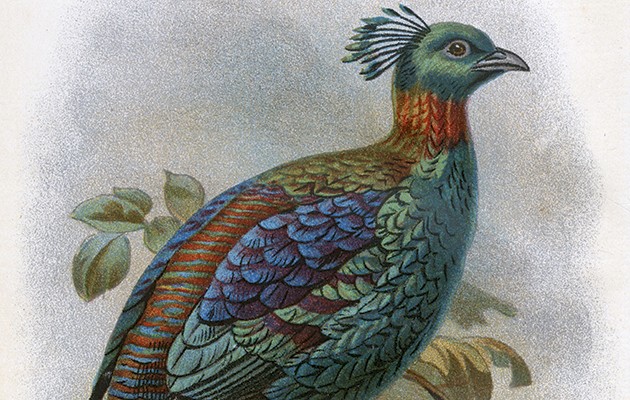James Marchington reviews the work of those fighting to save the pheasants of the world, the bird in all its many guises
Pheasants of the world can be easily forgotten when we become too accustomed to just one kind on our shores. But the World Pheasant Association are working tirelessly to ensure this does not happen, in their efforts to protect the pheasants of the world. James Marchington investigates their work.
Do you know the history of what you are shooting? Read the history of the pheasant to find out. Or read about a pheasant prized for its striking appearance, Satyr tragopan: the Crimson-horned pheasant.
PHEASANTS OF THE WORLD
In September scientists from around the world joined British conservationists and pheasant enthusiasts at a gathering of more than 150 people to celebrate 40 years of work saving pheasants of the world and related gamebirds threatened with extinction in their native habitats. The occasion was the 40th anniversary of the World Pheasant Association (WPA), and the party was held at the home of Keith and Jean Howman, two of the founders and still key figures in the organisation.
It all began when Keith Howman, now president emeritus of WPA, started rearing a few pheasants for a small shoot in 1966. He went on to acquire five species of ornamental pheasant, only to discover that two of them were endangered in the wild. He successfully bred from them, sparking an interest that led to him at one point owning the largest collection of pheasants in the world, with 35 species.
Howman yearned to see for himself the habitat and countries that his birds came from. “The real turning point for me was in 1975, when my wife and I visited Pakistan,” he says. “I was horrified by the rate of deforestation, which was the habitat and home to so many species of pheasants of the world. I came back determined to do something about it.”
Once home in England he got together with a handful of like-minded enthusiasts and the WPA was born. The intervening 40 years have seen some spectacular triumphs in its crusade to conserve endangered gamebirds and pheasants of the world, including many national parks, wildlife reserves and protected areas set up as a result of WPA-funded research.
THE INSPIRED AND AMBITIOUS EFFORTS OF THE WPA
The WPA has employed inspired and ambitious tactics that have allowed it to punch above its weight, achieving success with limited resources and funding. Take the Pipar project, for example, which has been running for more than 30 years in the Annapurna region of Nepal, a popular trekking destination in the foothills of the Himalayas. With the awareness that it would be nigh on impossible to protect endangered species without the support of the local community, WPA has focused its efforts on educating the villagers about their own environment and getting them on board with its conservation efforts.
None of this would be possible without the support of the shooting community. This year the WPA Black Grouse clay-shoot at Compton Manor, near Stockbridge, raised £13,000 to fund black grouse research and a further £1,000 for earthquake relief work in Nepal. Additional funds were raised at further charity shoots in Oxfordshire and Scotland.
The work continues – including a breeding programme that has seen some critically endangered Edwards’s pheasants bred in the UK and flown to Vietnam, the bird’s country of origin, for a reintroduction project.
To find out more about the work of the WPA, visit www.pheasant.org.uk and consider becoming a member.





